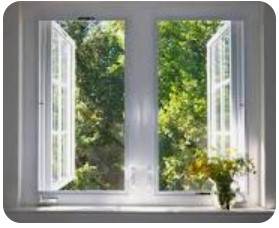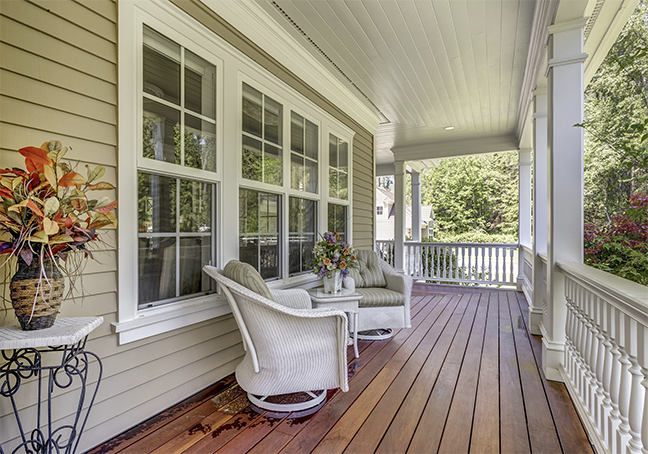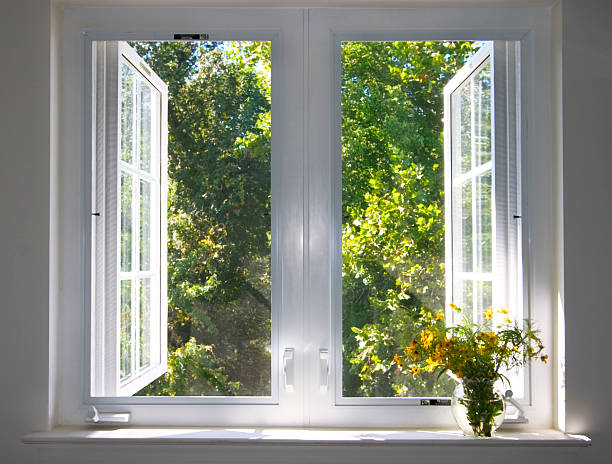Is Adding a Window to Your Home Difficult? Challenges, Costs, and Benefits Explained

Adding a new window to a house can significantly enhance the natural light, aesthetics, and even the value of your home. Heat gain and heat loss through windows are responsible for 25%–30% of residential heating and cooling energy use. However, the difficulty of adding a window depends on various factors, such as the location of the new window, the type of wall, and your home's structural integrity. While it is a valuable upgrade, the process can be complex and requires careful planning. Here, we will help you understand the challenges involved in adding a new window to your house and guide you through what to expect.
1. Understanding the Structure of Your Home
The first step in adding a window to your home is understanding the structure of the wall where the window will be installed. Walls in homes fall into two categories: load-bearing and non-load-bearing. Load-bearing walls support the structure of the house, carrying the weight of floors or roof above. Altering these walls to add a window requires structural reinforcement, such as installing a header beam, to ensure that the building's integrity remains intact. This can significantly increase the complexity and cost of the project.
In contrast, non-load-bearing walls do not support any significant weight, making it much easier to cut into them and frame a new window. However, even with non-load-bearing walls, careful planning is still required to ensure that the wall is adequately reinforced after the window opening is created.
Additionally, the exterior material of your home — whether brick, wood, stucco, or vinyl siding — affects the difficulty of cutting and installing the window. For instance, cutting through brick or stucco can be more labor-intensive and require specialized tools and expertise, whereas vinyl or wood siding tends to be easier to modify.
2. Location of the Window
The location of the new window plays a significant role in the difficulty of the project. If you’re adding a window in an area with existing electrical wiring, plumbing, or HVAC ductwork, additional work will be required to reroute these systems. This can increase both the cost and the complexity of the installation. In some cases, moving these components may not be feasible, requiring careful planning to find the right window placement.
The orientation of the window also matters. For example, south-facing windows can bring in more sunlight and heat, which might increase your home’s cooling load in the summer. On the other hand, north-facing windows may not get as much direct sunlight, but they can help improve natural lighting without overheating your home.
Windows added to higher floors, like second stories or attics, typically require scaffolding and extra safety precautions, which can complicate the installation process. Furthermore, windows added to basements often require excavation work to meet building codes that require egress windows, adding time and expense to the project
3. Framing and Cutting
Creating an opening in your home’s exterior wall for a new window is a labor-intensive process that requires skill and precision. First, the wall must be measured and marked for the window opening. Framing the window involves installing a header, sill, and side supports to reinforce the wall around the window opening. This is particularly critical for load-bearing walls, as the new frame must redistribute the weight of the wall above to prevent structural damage.
The type of tools and materials needed depends on the wall's exterior finish. Cutting through brick, stone, or stucco is much more challenging and may require professional-grade masonry saws. On the other hand, cutting through vinyl or wood siding is simpler, though precision is still key to prevent uneven cuts or gaps.
Framing mistakes can lead to future problems such as water leaks, uneven window placement, or compromised insulation. That’s why it’s essential to work with a contractor who understands the nuances of cutting and framing for window installation.
4. Insulation and Weatherproofing
After the window is installed, the surrounding area must be properly insulated and sealed to ensure your home remains energy-efficient and protected from the elements. Insulation may already be lacking or deteriorated in older homes, making this step even more critical. Poorly sealed windows can result in drafts, moisture infiltration, and higher energy bills. Installing proper insulation and weatherproofing around the new window ensures that it functions as intended and helps maintain a consistent indoor temperature.
Insulating a window involves filling gaps around the window frame with spray foam or fiberglass insulation to prevent air leakage. After the insulation is in place, the exterior of the window must be sealed with caulk or weatherstripping to keep out rain, snow, and wind. This step is especially important in regions with extreme weather conditions like Denver, where temperature fluctuations can cause poorly sealed windows to warp or fail.
In addition to sealing the window, it’s crucial to use flashing to direct water away from the frame and prevent moisture from entering the walls. Flashing is often placed around the top and sides of the window to create a waterproof barrier. Improper flashing or sealing can lead to significant issues like mold growth or wood rot, which are costly to repair down the line.
5. Permit Requirements
In many areas, adding a window to your home requires obtaining a building permit. This ensures that the installation complies with local building codes, safety regulations, and energy efficiency standards. Securing a permit varies by municipality, but it often includes submitting plans for the window installation and having the project inspected upon completion.
In Denver, as in many areas, building codes may dictate specific requirements for window size, placement, and egress, especially if the window is being installed in a bedroom or basement. For example, windows installed in bedrooms or basements must meet egress requirements to provide a safe exit in case of emergencies. These regulations often specify a minimum window size and height off the floor.
Failing to obtain the necessary permits can result in fines and complications when selling your home in the future. Additionally, unpermitted work may not meet safety standards, potentially leading to costly repairs or even structural damage.
6. Potential Costs
The cost of adding a window varies widely depending on several factors, including the size of the window, the materials used, the type of wall being cut into, and labor costs. More complex installations can increase costs, such as adding a window to a load-bearing wall or cutting through brick or stone.
If structural modifications are needed, such as reinforcing a load-bearing wall, the costs can increase substantially due to the additional materials and labor required. Custom windows or specialty designs, like bay or bow windows, can also add to the expense. Additional costs may include permits, which typically range from $50 to $300 depending on local regulations, and the need for scaffolding or other equipment for higher installations.
It’s important to get a detailed quote from a contractor that outlines all potential costs, including materials, labor, permits, and any unexpected challenges that may arise during the installation. While the initial investment may seem high, the benefits of improved natural light, ventilation, and home value often make the project worthwhile in the long run.
Adding a Window — A Complex but Rewarding Project
Adding a new window to your house can be a complex but rewarding project. The difficulty depends on factors such as the type of wall, window placement, and whether you're working with a load-bearing wall. For homeowners in Denver and the surrounding areas considering this upgrade, it's important to consult with professionals who can guide you through the process and ensure the project is done safely and effectively.
If you’re ready to brighten up your home with a new window, Wallaby Windows in Denver can help. Our expert team specializes in window installations and can assist with everything from planning to execution, ensuring your new window adds both value and comfort to your home. Contact us today to schedule a consultation.

